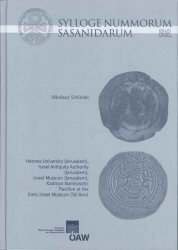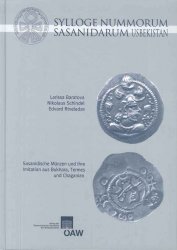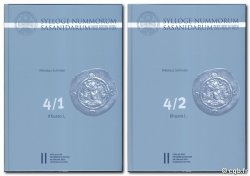ls22 - Sylloge Nummorum Sasanidarum 2, Ohrmazd I. - Ohrmazd II. ALRAM Michael, GYSELEN Rika
109.00 €约 912.33 CNY
数量
加入购物车

作者 ALRAM Michael, GYSELEN Rika
出版者 Verlag der Österreichischen Akademie der Wissenschaften
语言 allemand, français
描述细节 Vienne 2012, cartonné, 22 x 30, 610 pages dont 83 planches de photos de monnaies, nombreux dessins de monnaies, carte, tableaux, bibliographie. (en Allemand et en Français)
重量 2365 g.
评论
The new series Sylloge Nummorum Sasanidarum, Paris-Berlin-Wien, has as its aim the joint publication of the holdings of Sasanid coins preserved in the Cabinet des Médailles in Paris as well as the Münzkabinette in Berlin and Vienna. The three collections hold a total of ca. 11,000 of these coins, which will be published in 6 volumes.
The second volume of the series "Sylloge Nummorum Sasanidarum Paris-Berlin-Wien" covers the reigns of Ohrmazd I (271/2-273), Wahram I (273-276), Wahram II (276-293), Narseh (293-302/3) and Ohrmazd II (302/3-309/10), and thus closes the gap between volumes one and three, which have already been published. In addition to extensive numismatic commentaries (in French and German), a catalogue and illustrations, the volume contains a detailed numismatic historical introduction in English as well as chapters dealing with the beginning of the Kushano-Sasanian coin series (N. Schindel), the Paikuli inscription (C. Cereti, G. Terribili), and metal analyses of the various coin issues (Linke et al., M. Blet-Lemarquand). This volume will therefore be an indispensable handbook for numismatists, historians, art historians or archaeologists who are interested in Iranian history or Late Antiquity.
The new series Sylloge Nummorum Sasanidarum, Paris-Berlin-Wien, has as its aim the joint publication of the holdings of Sasanid coins preserved in the Cabinet des Médailles in Paris as well as the Münzkabinette in Berlin and Vienna. The three collections hold a total of ca. 11,000 of these coins, which will be published in 6 volumes.
The second volume of the series \\\"Sylloge Nummorum Sasanidarum Paris-Berlin-Wien\\\" covers the reigns of Ohrmazd I (271/2-273), Wahram I (273-276), Wahram II (276-293), Narseh (293-302/3) and Ohrmazd II (302/3-309/10), and thus closes the gap between volumes one and three, which have already been published. In addition to extensive numismatic commentaries (in French and German), a catalog and illustrations, the volume contains a detailed numismatic historical introduction in English as well as chapters dealing with the beginning of the Kushano-Sasanian coin series (N. Schindel), the Paikuli inscription (C. Cereti, G. Terribili), and metal analyzes of the various coin issues (Linke et al. , M. Blet-Lemarquand). This volume will therefore be an indispensable handbook for numismatists, historians, art historians or archaeologists who are interested in Iranian history or Late Antiquity
The second volume of the series "Sylloge Nummorum Sasanidarum Paris-Berlin-Wien" covers the reigns of Ohrmazd I (271/2-273), Wahram I (273-276), Wahram II (276-293), Narseh (293-302/3) and Ohrmazd II (302/3-309/10), and thus closes the gap between volumes one and three, which have already been published. In addition to extensive numismatic commentaries (in French and German), a catalogue and illustrations, the volume contains a detailed numismatic historical introduction in English as well as chapters dealing with the beginning of the Kushano-Sasanian coin series (N. Schindel), the Paikuli inscription (C. Cereti, G. Terribili), and metal analyses of the various coin issues (Linke et al., M. Blet-Lemarquand). This volume will therefore be an indispensable handbook for numismatists, historians, art historians or archaeologists who are interested in Iranian history or Late Antiquity.
The new series Sylloge Nummorum Sasanidarum, Paris-Berlin-Wien, has as its aim the joint publication of the holdings of Sasanid coins preserved in the Cabinet des Médailles in Paris as well as the Münzkabinette in Berlin and Vienna. The three collections hold a total of ca. 11,000 of these coins, which will be published in 6 volumes.
The second volume of the series \\\"Sylloge Nummorum Sasanidarum Paris-Berlin-Wien\\\" covers the reigns of Ohrmazd I (271/2-273), Wahram I (273-276), Wahram II (276-293), Narseh (293-302/3) and Ohrmazd II (302/3-309/10), and thus closes the gap between volumes one and three, which have already been published. In addition to extensive numismatic commentaries (in French and German), a catalog and illustrations, the volume contains a detailed numismatic historical introduction in English as well as chapters dealing with the beginning of the Kushano-Sasanian coin series (N. Schindel), the Paikuli inscription (C. Cereti, G. Terribili), and metal analyzes of the various coin issues (Linke et al. , M. Blet-Lemarquand). This volume will therefore be an indispensable handbook for numismatists, historians, art historians or archaeologists who are interested in Iranian history or Late Antiquity







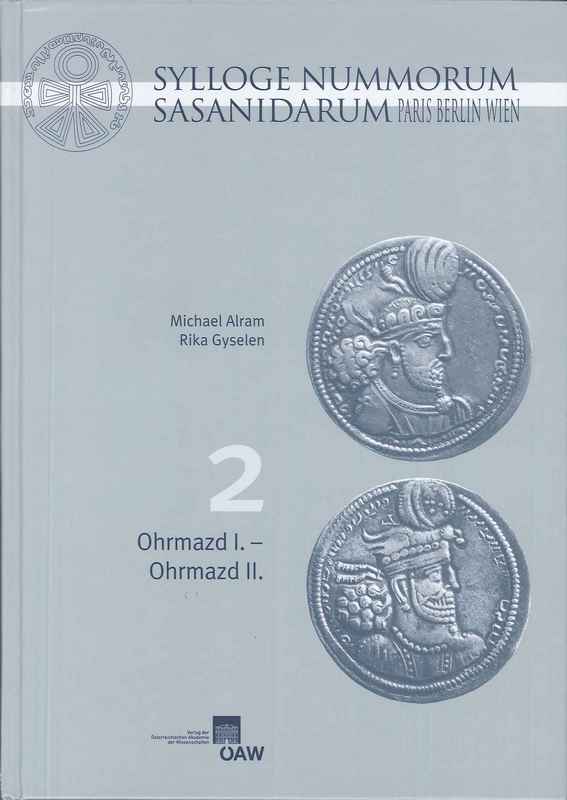
 对产品描述纠错
对产品描述纠错 打印
打印 分享我的选择
分享我的选择 提问
提问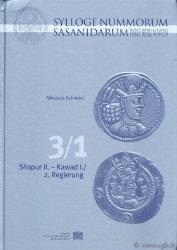
 产品介绍
产品介绍